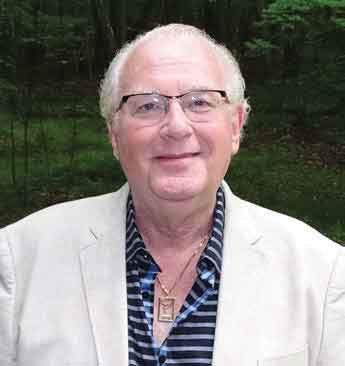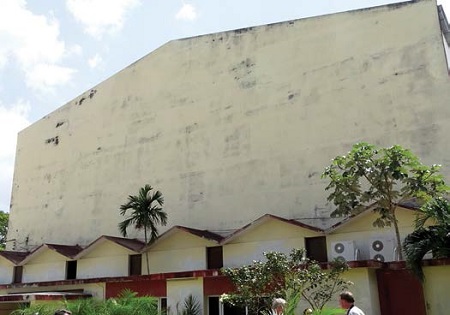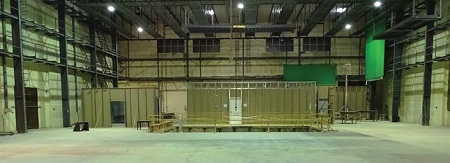Writing the Next Chapter in Cuba’s Television History

Barry PasternakHAVANA—Television broadcasting is nothing new here; actually it dates back to the time of the big post-World War II U.S. TV launch. Two Havana stations took to the air in the fall of 1950 and additional stations soon followed, providing coverage to most of this island nation. And just as in the States, national networks were established and eventually color television became a reality.
Bolstered by equipment and technology supplied by U.S. manufacturers such as RCA, Cuban TV broadcasting flourished in the 1950s, seemingly destined to continue following the same path being blazed in the nation 90 miles to the north.
However, such TV evolutionary “dual tracking” ended rather abruptly in 1959 with the overthrow of the regime of then-president Fulgencio Batista and the installation of a new government led by Fidel Castro, a move strongly opposed by the U.S. government. Almost immediately a trade embargo was enacted and this literally froze Cuba—including its television broadcasting operations—in time.
Fast forward to the 21st century and the easing of sanctions on Cuba earlier this year by the Obama administration. Now the country is about to get a TV makeover, thanks to Barry Pasternak and his Cuba International Network LLC (CIN). The long-time broadcast veteran and his group are working to bring modern technology to the country in the form of a state-of-the-art production facility and a couple of completely-equipped 4K/HD film and video mobile units.
“It’s really about Americans going to Cuba to train Cuban technicians on modern television equipment and techniques and to establish a facility to facilitate foreign broadcasters and content creators in originating programming from Cuba,” said Pasternak. “Our intent is to allow American and other production companies to come in and shoot without having to bring in boatloads of equipment.”
STILL A 525 NTSC WORLD

The Cuba International Network’s building in Havana Pasternak noted that even though contemporary Cuban television broadcasting would be considered “primitive” by many standards (they still operate in 525-line analog), the technicians are quite savvy and do not lack in understanding and expertise when it comes to digital video and 21st century production techniques.
The professional video industry's #1 source for news, trends and product and tech information. Sign up below.
“We’ve found that Cuban technical people are really very capable,” he said. “Some of those who left Cuba are now working at Telemundo and Univision.”
Pasternak is no stranger to Cuba, television or the Latino way of doing business.
“I’m 67 and have been involved in broadcasting since I was a teenager,” he said. “I’ve spent the past 30 years working in television in the Caribbean region and have been traveling to Cuba for the past 15 years.
“I’m the guy who’s been going there when everyone else said ‘Don’t, you’re just wasting your time.’ This whole Cuba thing is exploding on us right now. There are a lot of companies wanting to shoot on location in Cuba. We want to help them; however, our goal is to help them to establish a state-of-the-art industry in Cuba.”
Pasternak explained that isolation of the Cuban population from the rest of the world has created some interesting situations.
“Anybody there under 50 years of age might never have seen a contract,” said Pasternak. “They get very uncomfortable when someone starts pushing a high-end sales pitch, as they haven’t had any dealings with even low-level pitches. These are very smart people, but they don’t understand western ‘Business 101.’ They haven’t been exposed to business practices. There are some things they just can’t grasp on the first iteration For instance, many Cubans have heard of an MOU. And when you’re working in an environment like this you have to be considerate of the human element. You don’t want to intimidate the people there in Cuba.
“A lot of companies think that just because they’ve been working in the Latin American market, Cuba will be the same way. It’s not; it’s completely different and these guys quickly find out they don’t know what they’re doing.”
LIKE NO OTHER PLACE ON EARTH

CIN’s massive 16,000-square-foot studio facility has a 30-foot ceiling height and includes provisions for an 800-square-foot “wet stage area” for underwater shooting. Once barriers are broken down, Pasternak sees Cuba as something of a producer’s delight when it comes to location work.
“Unless you’ve been here for quite a while, you’re going to experience a tremendous cultural shock,” he said. “The Havana airport is high tech and modern, but you go one mile from there and you’re back in 1958—the automobiles, the buildings, just about everything else. Time has stood still. There’s really no place else on earth like this. There are locations on the island where no shooting has ever been done!”
Pasternak notes that an American production journeyed to Cuba last year to do the documentary “Papa Hemmingway in Cuba,” but that was just the tip of the iceberg.
There are a lot of companies wanting to shoot on location in Cuba, he said. “The antique car people are really interested due to the number of [vintage] vehicles that are still in use here and have been maintained. We’re working with some of these groups. Another advantage of doing production here is that it’s a lot less expensive than anywhere else.”
Pasternak described most shoots as being done with an American or European director and non-Cuban crews. He describes his company’s role in this as a facilitator of providing Cuban personnel who are fully trained in U.S.-style production.
“We work with the outside film companies to help them travel to Cuba,” he said. “We also help with the paperwork and in securing accommodations,” noting that some of his clients want to bring their families with them so that they can get a better feel for what was once known as “The Pearl of the Antilles.”
One of the big problems noted by Pasternak is the lack of an adequate communications infrastructure in Cuba.
“Internet connectivity, cellphone connectivity—these are big issues,” he said. “You can connect to Verizon, but the roaming charges are very expensive.”
He noted that while there is some fiber connectivity available, there is no direct path to the United States.
“Traffic first has to go to Jamaica or to Venezuela and on to the U.S. from there” he said. “Satellite communications are limited too. There’s a major restriction on bringing in satellite transmission gear.”
Pasternak’s company applied for and was granted a common carrier license, which will allow it to sell bandwidth to facilitate outside production companies, but this is just one of many issues that have to be resolved. Another is technical training.
“These are smart people,” he said. “But they haven’t been exposed to a lot of the technology we take for granted. They have a truck with some Sony HD cameras, but they don’t broadcast in high definition. The U.S. producers want to go 4K and the Cubans don’t have any experience with this. The techs really need training on the new technologies, but there’s no support mechanism here for that. We’ve brought in [telecom consultant and TV Technology columnist] Wes Simpson to help along those lines. He’ll be sitting down with several of our equipment suppliers to discuss training on specific pieces of equipment.”
HELP, NOT REVAMP
In discussing his involvement as a trainer for the project, Simpson noted that his part of the mission would be to ensure that CIN would have the technical manpower it needed and also to provide the Cuban technicians with more marketable skills when 21st century technology eventually becomes mainstream in Cuba.
“We’re not just coming in as technology ‘carpet baggers,’” said Simpson. “We’re bringing the technology to them with the goal of making sure they understand it and are able to incorporate it into anything they might wish to do. We want to make sure that they gain as much knowledge as possible during the training. It will be both theory and hands-on training.”
Asked if he thought the language barrier might impede training efforts, Simpson, said “definitely not. Most of the technologies [and associated vocabulary] involved are English-based. Most of the students I’ve taught in Asia and South America in the past have at least a working knowledge of the technical terms in English. I expect the same in Cuba.”
Pasternak stressed that the objective of his company was to help U.S. and other content producers, not to revamp the Cuban television infrastructure. “We want to open up an industry, train people and maybe make good content in the process and at the same time save money and grief for our clients,” he said. “ The market is explosive, but there are many things that have yet to be worked out.
“We don’t play politics,” Pasternak added, “we’re just here to do television.”
